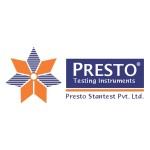International standards play a vital role in regulating salt spray testing, ensuring consistency, reliability, and comparability of results across different laboratories and industries. Some of the most commonly used international standards for salt spray testing include:
- ASTM B117: This standard is published by the American Society for Testing and Materials (ASTM) and is widely recognized for salt spray testing of metallic materials and coatings. It provides guidelines for the preparation of test specimens, test conditions, and evaluation of corrosion resistance.
- ISO 9227: Published by the International Organization for Standardization (ISO), ISO 9227 specifies the salt spray test method for assessing the corrosion resistance of metallic materials or coated metallic materials exposed to a controlled salt spray environment.
- JIS Z 2371: This standard is established by the Japanese Industrial Standards (JIS) and provides procedures for salt spray testing of metallic materials and coatings. It includes specifications for test conditions, equipment, and evaluation of test results.
- IEC 60068-2-11: This standard, published by the International Electrotechnical Commission (IEC), specifies the test method for salt mist corrosion testing of electronic components and equipment. It is commonly used in the electronics industry to evaluate the durability of products in corrosive environments.
- DIN EN ISO 9227: This standard is a European adaptation of ISO 9227 and provides guidelines for conducting salt spray tests in European countries. It ensures harmonisation of testing procedures and results across European industries.
These international standards establish standardised procedures for salt spray testing, including parameters such as test duration, temperature, concentration of salt solution, and evaluation criteria for corrosion resistance. Adhering to these standards helps manufacturers, researchers, and regulators to accurately assess the performance and durability of materials and coatings, enabling informed decision-making in product development and quality control processes.





.png)
Comments